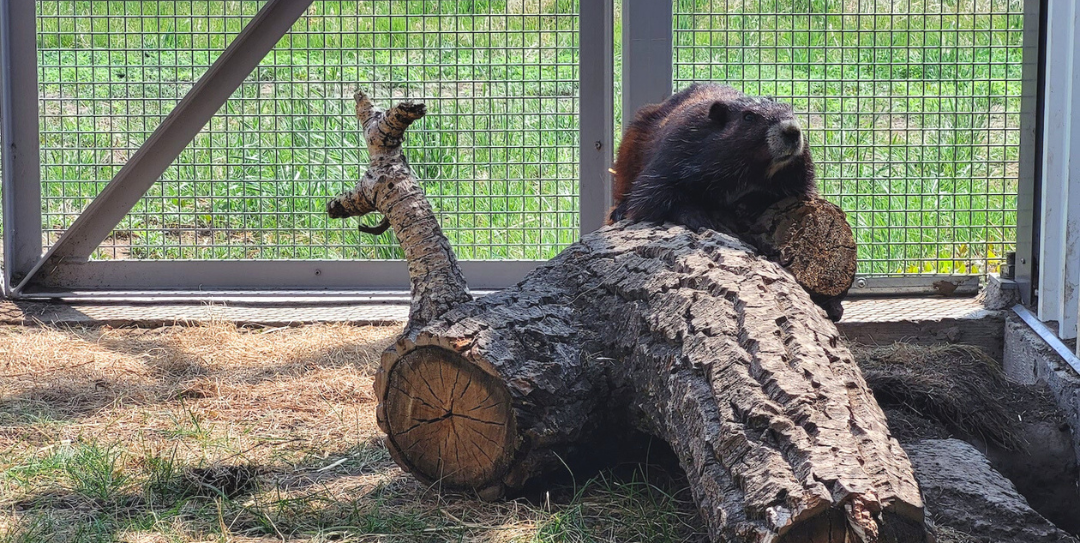Tiny Guardians of The Wild: Birth of 14 Vancouver Island Marmots Brings Hope for the Species
June 29, 2023
Canada’s most endangered mammal, the Vancouver Island marmot, just received a boost in their numbers thanks to the birth of 14 pups at the Wilder Institute. These are the first pups born at the Wilder Institute’s new conservation breeding and research facility, the Archibald Biodiversity Centre (ABC).
“We’ve been eagerly waiting all spring for these pups to start making an appearance,” said Caitlin Slade, Manager of Animal Care (ABC/WCC) at the Wilder Institute. “After birth, Vancouver Island marmot pups will stay within their nest boxes with their mom and it’s important to not disturb them during the first two weeks after birth.”
Vancouver Island marmots are a uniquely Canadian species found only on Vancouver Island. In the 1990s, these marmots started facing serious declines in their populations with only 70 marmots left in 1998.
The Wilder Institute has been supporting the conservation of this species since 1998 through their conservation breeding efforts. They transfer marmot pups born in Alberta over to their partners in British Columbia (B.C.), the Marmot Recovery Foundation, who will then release them to the wild. In some cases, the organizations may retain marmots in their conservation breeding program to maintain genetic diversity. Out of 214 Critically Endangered marmots born at the Wilder Institute, 157 have been transported to B.C. for release.
With breeding season taking place at the new facility this year, the Wilder Institute was able to provide additional features for the marmots under their care. One of these new features was an extended underground dig-out curtain in their outdoor habitat allowing them to perform natural behaviours such as digging burrows underground. However, this also means that the marmots may choose to give birth underground instead of the nest boxes. While the Wilder Institute has tallied 14 pups, surprise pups could still be on the way.
“This construction project has really been about creating a marmot dream home,” said Ralph Choptian Senior Manager, Maintenance Contracts at the Wilder Institute. “While it was a challenging project, we were able to come up with the unique solutions needed to provide a truly special and customized home for such a unique species.”
Choptian shared that other habitat features include fully soundproofed walls which allow the marmots to sleep undisturbed. Each subsection is separated to prevent quarrels between neighbours, but a sliding panel allows the team to easily move marmots as needed. There is also an elevated mound that allows the marmots to lounge around, as they do in the wild, and view their neighbours and surroundings. In addition to the smaller sections, there is a larger family-sized pen where moms and pups can gather.
The Wilder Institute is one of three facilities breeding Vancouver Island marmots in addition to the Toronto Zoo and the Tony Barrett Mt. Washington Marmot Recovery Centre. In July, the Wilder Institute will host representatives from all organizations at the ABC for their annual general meeting. As part of this meeting, they will strategize whether the pups will be released into the wild, or if they will remain at a breeding facility to diversify the genetic pool and contribute to future generations of marmots.
The Wilder Institute is excited to celebrate the ABC by naming this litter of pups after their Alberta heritage. With names such as ‘Namaka’ (southern Alberta hamlet near the facility) and ‘Tyrrell’ (after Alberta’s Royal Tyrrell Museum) these pups will continue to represent their birthplace no matter where in Canada they end up.

Adult Vancouver Island marmot enjoying it’s outdoor habitat at the ABC
What else is happening in the world of wildlife conservation?
